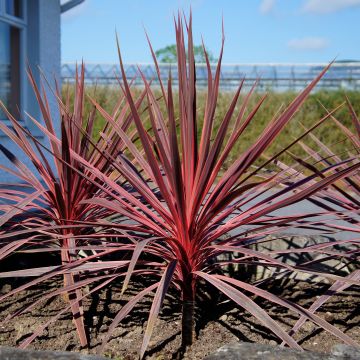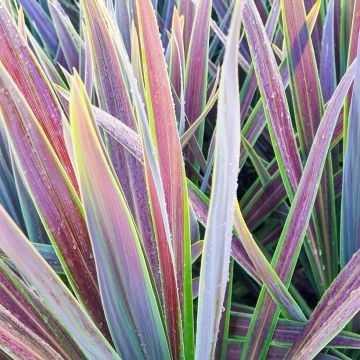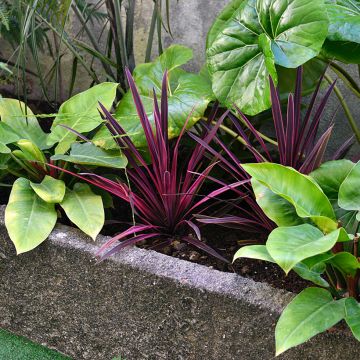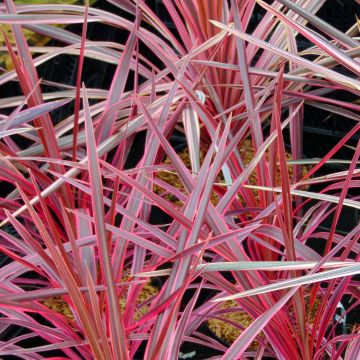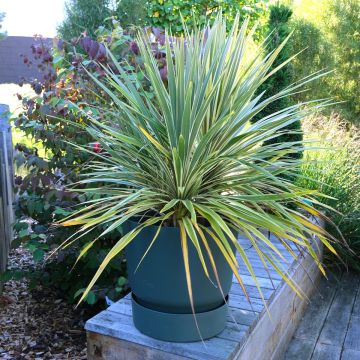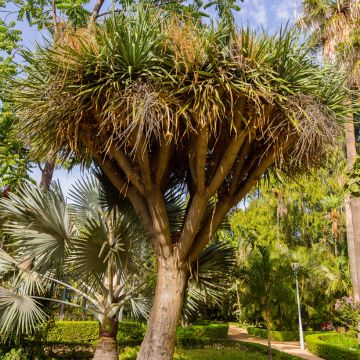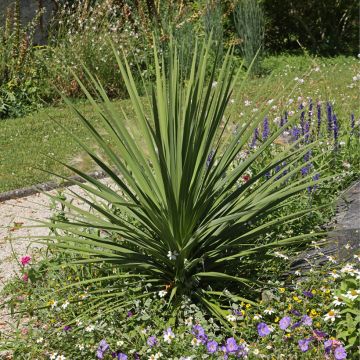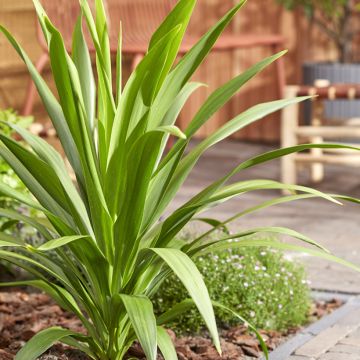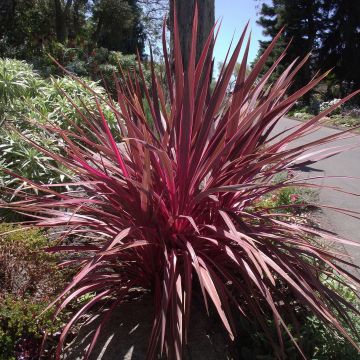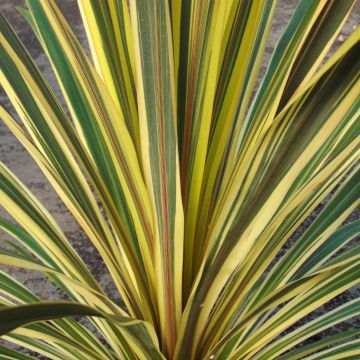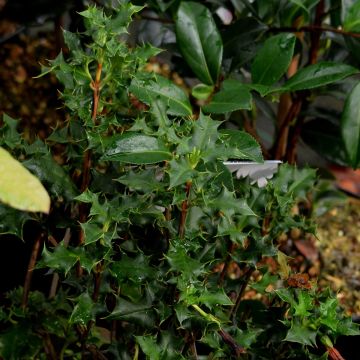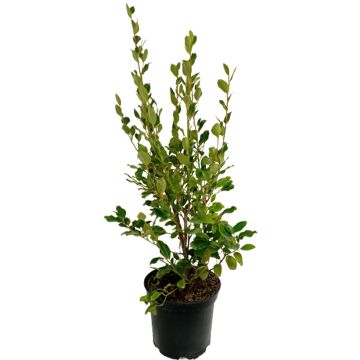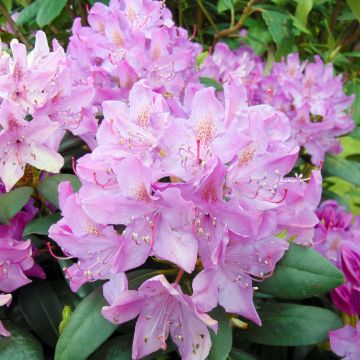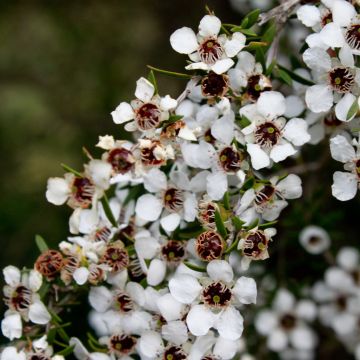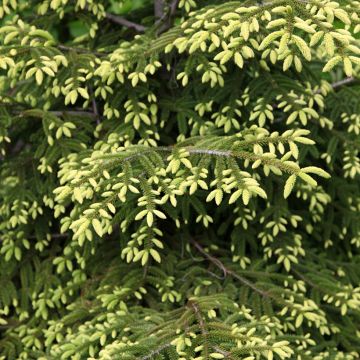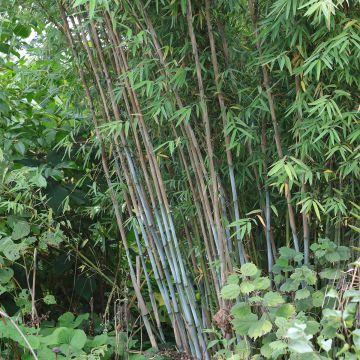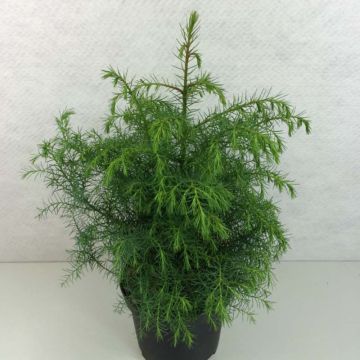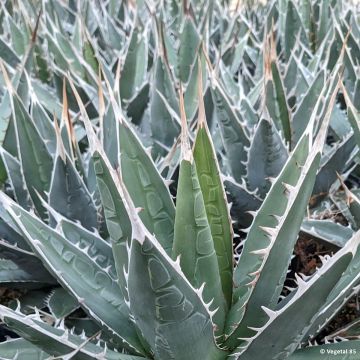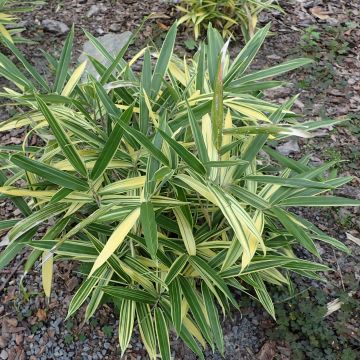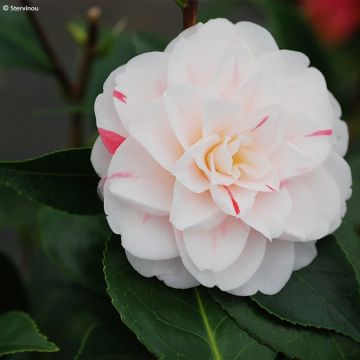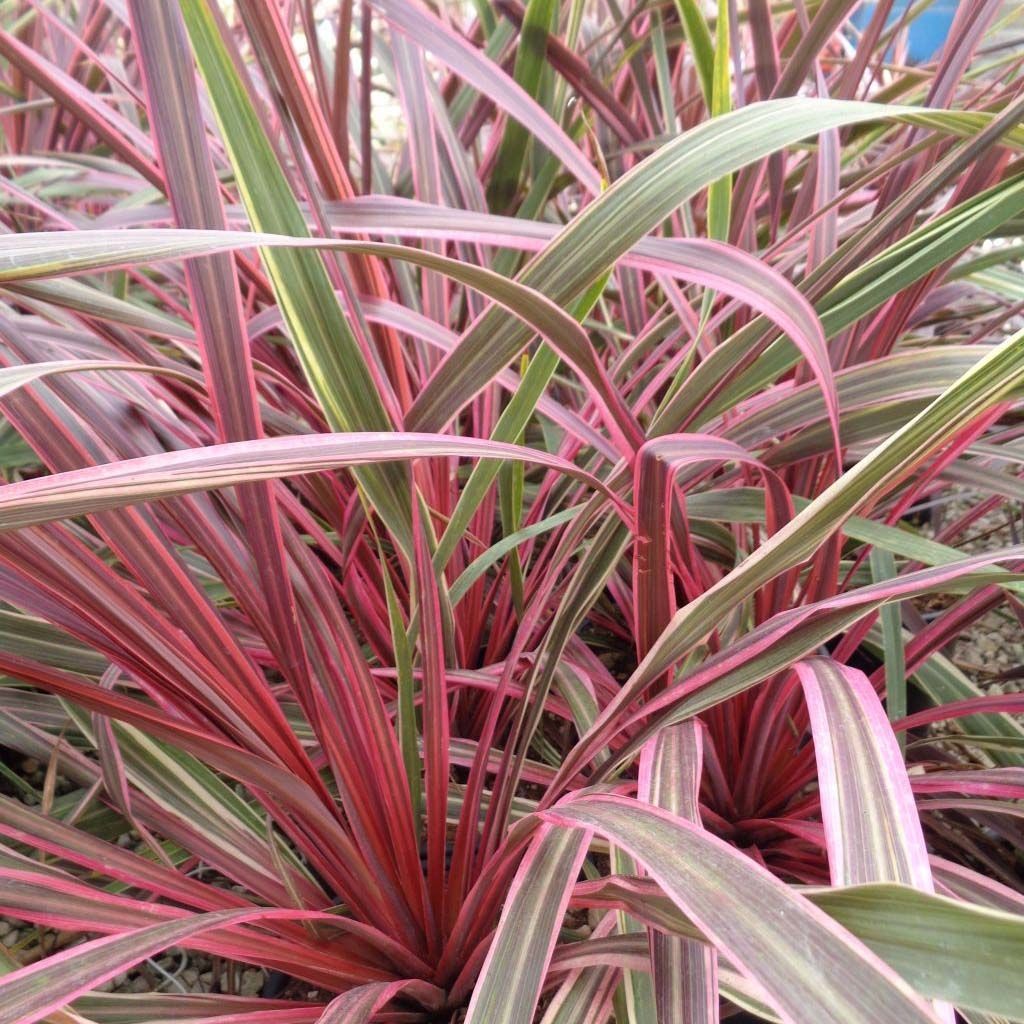

Cordyline Can Can - Cabbage Tree
Cordyline Can Can - Cabbage Tree
Cordyline x banksii Can Can 'PF100'
Forest Cabbage Tree
Great!
Yvon, 06/09/2021
This item cannot be shipped to the selected country
Delivery charge from €5.90
More information
Delivery charge from €5.90
More information
Schedule delivery date,
and select date in basket
This plant carries a 24 months recovery warranty
More information
We guarantee the quality of our plants for a full growing cycle, and will replace at our expense any plant that fails to recover under normal climatic and planting conditions.
From €5.90 for pickup delivery and €6.90 for home delivery
Express home delivery from €8.90.
Does this plant fit my garden?
Set up your Plantfit profile →
Description
Cordyline 'Can Can', a hybrid with a compact habit of the Cordyline banksii, offers unprecedented variations of colours that are quite stunning: its long ribbon-like leaves, gathered in a magnificent cluster, show shades of pinks, white to cream, and different shades of greens that harmonize and contrast like bold brushstrokes of the rainbow. This perennial plant with a shrubby habit, resembling a small palm tree with incredible colours, deserves to be highlighted on the terrace, balcony, or in the centre of a small exotic-inspired flower bed. Planting in the open ground should be reserved for coastal climates, elsewhere it can be grown in a large pot, to decorate the veranda during the winter.
Cordyline Can Can is a recent New Zealand horticultural creation, distinguished by a silver medal at Plantarium in 2013. It has the genes of the Cordyline australis, as well as its cousin Cordyline banksii, which is less known, with more modest growth and lesser hardiness. These tree-like perennial plants belong to the agave family and are endemic to New Zealand. Cordylines can be found in very diverse habitats, such as forest edges, riverbanks, and open areas, particularly near swamps.
The 'Can Can' variety is of modest stature and fairly fast-growing, it has remarkably coloured foliage that is constantly evolving. The plant has a rosette-like leafy habit in its juvenile state (for several years), then it forms a sort of small tree with a single trunk and branches adorned with leafy tufts. This variety will reach a height of 1 m, with a spread of 80 cm (31.5 in) at the age of 10 years. At maturity, it will not exceed 1.50 m (5 ft) in all directions. Its evergreen leaves are long and narrow, sword-shaped, pointed and slightly arching, and measure 40 to 70 cm in length and 3 to 6 cm in width at the base. They have numerous parallel veins. The young leaves emerge in bright pink and red tones. The mature leaves transition from cream to light green and then dark green. The flowering occurs in September-October, on mature plants. Each branch can develop once it has produced a flower stem. The small flowers in shades of brown, pink, and purple, are nectar-rich and delicately scented, borne on large dense panicles measuring 60 cm (24 in) in length.
Tolerant to wind and sea spray and drought-resistant it is a good plant for coastal areas. The multicoloured and ever-changing Cordyline 'Can Can' should be placed in the centre of a flower bed or as a standalone in a mild garden. It can withstand temperatures ranging from -5°C (23 °F) to -7°C (19.4 °F), which allows it to be grown anywhere in a large pot that can be moved from the terrace to the veranda in winter. In a pot, it is necessary to ensure proper watering and feeding. This remarkable plant, just like bananas, proteas, cannas, bamboos, mimosas, or castor beans, will bring a truly exotic aspect to our gardens and terraces.
Cordyline Can Can - Cabbage Tree in pictures
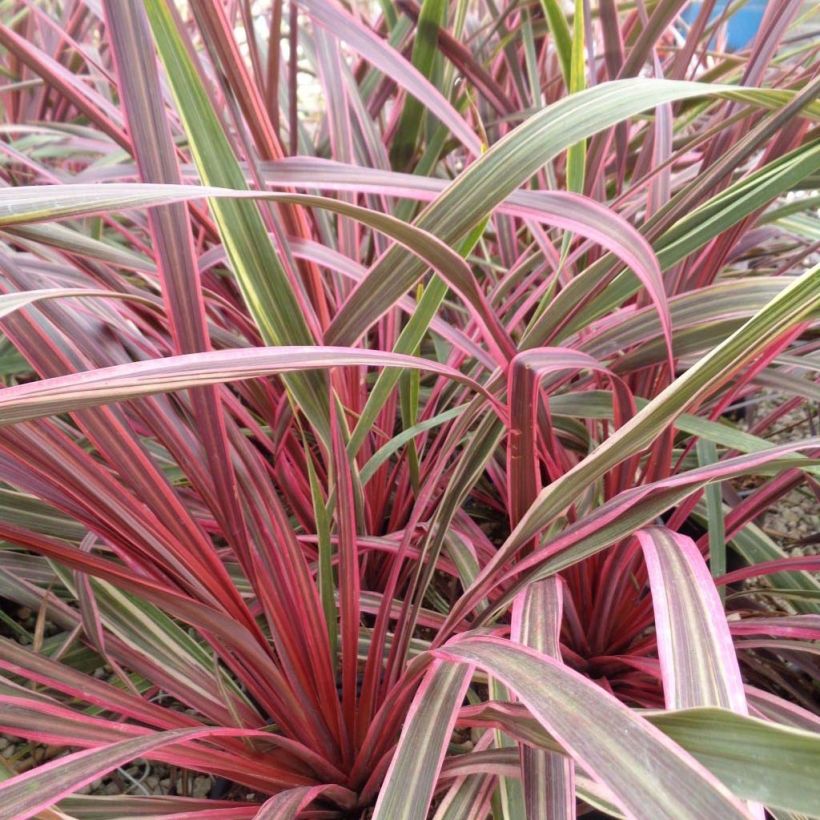

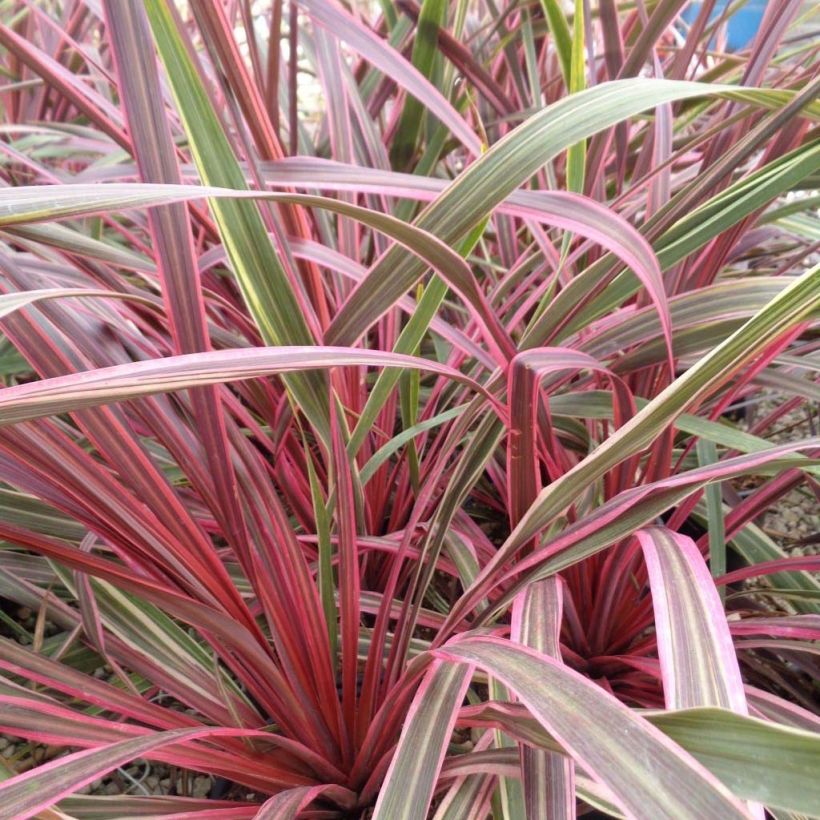

Plant habit
Flowering
Foliage
Botanical data
Cordyline
x banksii
Can Can 'PF100'
Agavaceae
Forest Cabbage Tree
Cultivar or hybrid
Other Cordyline
Planting and care
The 'Can Can' Cordyline thrives in the sun in light and well-drained, moist soil. It can withstand winds and sea spray, but shelter it from cold north winds. It appreciates high summer temperatures but does not like waterlogged soils. When planting in spring, add coarse sand and leaf compost. In winter, protect the top of the bush with fleece. The Cordyline does not require specific pruning, just remove dried leaves and faded flowers. Only water in case of prolonged drought. It has few pests as it does not attract predators.
Potted plants require regular watering and feeding. Bring your cordyline indoors from the end of September to a very bright, cool place, kept frost-free. Reduce watering in winter and stop feeding.
Planting period
Intended location
Care
Evergreen shrubs
Haven't found what you were looking for?
Hardiness is the lowest winter temperature a plant can endure without suffering serious damage or even dying. However, hardiness is affected by location (a sheltered area, such as a patio), protection (winter cover) and soil type (hardiness is improved by well-drained soil).

Photo Sharing Terms & Conditions
In order to encourage gardeners to interact and share their experiences, Promesse de fleurs offers various media enabling content to be uploaded onto its Site - in particular via the ‘Photo sharing’ module.
The User agrees to refrain from:
- Posting any content that is illegal, prejudicial, insulting, racist, inciteful to hatred, revisionist, contrary to public decency, that infringes on privacy or on the privacy rights of third parties, in particular the publicity rights of persons and goods, intellectual property rights, or the right to privacy.
- Submitting content on behalf of a third party;
- Impersonate the identity of a third party and/or publish any personal information about a third party;
In general, the User undertakes to refrain from any unethical behaviour.
All Content (in particular text, comments, files, images, photos, videos, creative works, etc.), which may be subject to property or intellectual property rights, image or other private rights, shall remain the property of the User, subject to the limited rights granted by the terms of the licence granted by Promesse de fleurs as stated below. Users are at liberty to publish or not to publish such Content on the Site, notably via the ‘Photo Sharing’ facility, and accept that this Content shall be made public and freely accessible, notably on the Internet.
Users further acknowledge, undertake to have ,and guarantee that they hold all necessary rights and permissions to publish such material on the Site, in particular with regard to the legislation in force pertaining to any privacy, property, intellectual property, image, or contractual rights, or rights of any other nature. By publishing such Content on the Site, Users acknowledge accepting full liability as publishers of the Content within the meaning of the law, and grant Promesse de fleurs, free of charge, an inclusive, worldwide licence for the said Content for the entire duration of its publication, including all reproduction, representation, up/downloading, displaying, performing, transmission, and storage rights.
Users also grant permission for their name to be linked to the Content and accept that this link may not always be made available.
By engaging in posting material, Users consent to their Content becoming automatically accessible on the Internet, in particular on other sites and/or blogs and/or web pages of the Promesse de fleurs site, including in particular social pages and the Promesse de fleurs catalogue.
Users may secure the removal of entrusted content free of charge by issuing a simple request via our contact form.

































